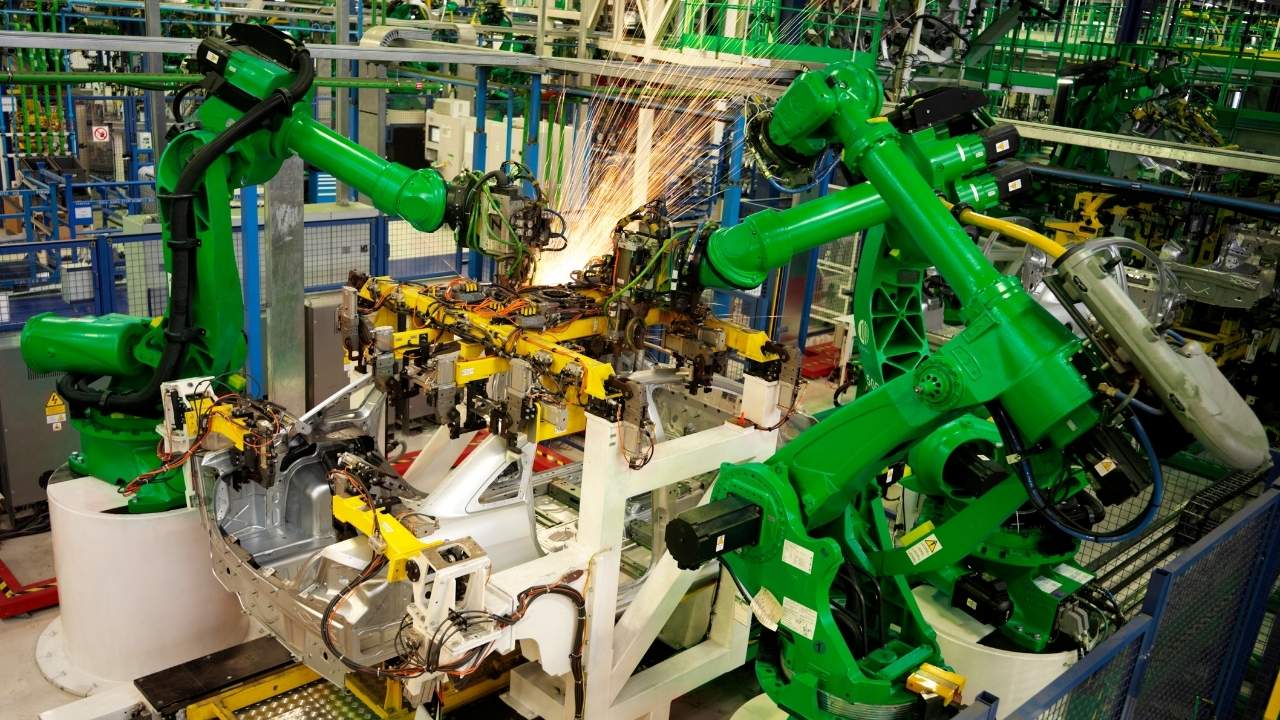Optimize your inventory and warehouse management with our comprehensive guide on Method Storage for Inventory. Discover strategies for efficient storage, improved organization, and intelligent inventory control. Enhance your operations and reduce costs with our expert tips!
Selecting the most suitable inventory management system is a critical decision that can significantly impact your warehouse efficiency and overall business performance. Method storage for inventory is an advanced approach that has transformed how businesses handle their inventory stock. This comprehensive guide will explore the concept of method storage, its various types, benefits, and implementation strategies.
Understanding Method Storage for Inventory
Method storage is a sophisticated approach to organizing and managing inventory in the warehouse. It involves systematically arranging products to maximize space utilization, improve accessibility, and enhance overall efficiency. Unlike conventional storage methods that often lack structure, method storage employs strategic techniques backed by technology to optimize warehouse operations.
The primary objectives of method storage include:
- Optimizing Space Usage: Method storage aims to use every available cubic foot of warehouse space effectively. This includes utilizing vertical space, minimizing aisle width where possible, and employing storage systems that can adapt to different product sizes.
- Improving Item Accessibility: By organizing items strategically, method storage reduces the time and effort required to locate and retrieve products. This is crucial for improving order fulfillment speed and accuracy.
- Enhancing Inventory Accuracy: Through precise tracking and organization, storage methods significantly reduce errors in inventory counts and locations. This leads to better stock management and fewer discrepancies.
- Reducing Operational Costs: By improving efficiency and reducing errors, method storage helps cut down on labor costs, minimizes the need for excess inventory, and can even reduce the need for additional storage space.
- Increasing Productivity: With a well-organized warehouse, staff can work more efficiently, spending less time searching for items and more time on value-added tasks.
The Evolution of Warehouse Organization
To fully appreciate the significance of method storage, it’s important to understand how warehouse organization has evolved over time:
1. Traditional Approach:
- Relied heavily on manual processes and paper-based systems
- Limited use of technology, often just basic spreadsheets
- Storage locations were often memorized by long-term employees
- Prone to errors, misplacements, and inefficiencies
- Difficult to scale as business grew
2. Basic Automation:
- Introduction of simple barcode systems for tracking
- Use of basic warehouse management software
- Limited computerization of inventory records
- Improved accuracy compared to fully manual systems
- Still lacked sophistication in terms of space optimization and advanced analytics
3. Modern Method Storage:
- Utilizes advanced technology including RFID, IoT sensors, and AI-driven analytics
- Implements strategic organization techniques based on data-driven insights
- Focuses on maximizing efficiency, minimizing errors, and optimizing space utilization
- Integrates with broader supply chain management systems
- Allows for real-time inventory visibility and predictive analytics
Key Types of Method Storage Systems
Method storage encompasses several approaches, each suited to different warehouse needs:
1. Fixed Location System:
- Assign a specific, permanent location for each item or SKU
Advantages:
- Easy to locate items without relying on technology
- Suitable for small inventories or slow-moving items
- Simple to implement and understand for staff
Disadvantages:
- This may lead to wasted space if inventory levels fluctuate
- Less flexible for changing product lines or seasonal variations
- It can be inefficient for large or complex inventories
Best for Small warehouses, businesses with stable inventory levels, or for storing maintenance parts
2. Random Location System:
- Stores items in any available space, tracked by a warehouse management system
Advantages:
- Maximizes space utilization, especially useful for fluctuating inventory levels
- Highly flexible for varying product sizes and quantities
- Can significantly increase storage density
Disadvantages:
- Requires a sophisticated and reliable tracking system
- May increase picking time if not managed properly
- Can be confusing for staff used to fixed locations
Best for: Large warehouses with diverse inventory, e-commerce fulfillment centers
3. Zone Storage System:
Divide the warehouse into zones based on product characteristics (e.g., size, type, picking frequency)
Advantages:
- Improves picking efficiency by grouping similar items
- Balances organization and flexibility
- Can be customized to specific business needs (e.g., temperature-controlled zones)
Disadvantages:
- Requires careful planning and periodic reassessment
- May need reorganization as the product mix changes
- This can lead to underutilized space if zones are not well-managed
Best for: Warehouses with distinct product categories, those handling both B2B and B2C orders
4. Chaotic Storage System:
Places items in the nearest available location, relying heavily on WMS for tracking
Advantages:
- Maximizes space utilization to the highest degree
- Highly efficient for high-turnover items
- Reduces travel time for put-away operations
Disadvantages:
- Relies entirely on advanced tracking technology
- Can seem counterintuitive and may meet resistance from traditional warehouse staff
- Requires significant investment in technology and training
Best for: High-volume operations, automated warehouses, facilities with homogeneous product sizes
Essential Components of Effective Method Storage
To implement method storage successfully, several key elements are necessary:
1. Warehouse Management System (WMS):
A sophisticated software system that oversees all warehouse operations
Features:
- Real-time inventory tracking
- Order management and fulfillment
- Labor management and task assignment
- Reporting and analytics capabilities
Benefits:
- Improves inventory accuracy
- Enhances order fulfillment speed and accuracy
- Provides valuable data for continuous improvement
Considerations:
- Choose a WMS that integrates with your existing systems
- Ensure scalability to accommodate business growth
- Look for user-friendly interfaces to ease adoption
2. Advanced Tracking Technology:
Utilizes tools such as RFID tags, barcodes, or QR codes
RFID (Radio-Frequency Identification):
- Allows for scanning without line-of-sight
- Enables bulk scanning of multiple items
- More expensive but offers greater efficiency
Barcodes/QR Codes:
- Cost-effective and widely used
- Requires line-of-sight for scanning
- QR codes can store more information than traditional barcodes
Benefits:
- Enables precise tracking of item locations
- Facilitates accurate inventory counts
- Reduces errors in picking and shipping
Considerations:
- Choose technology based on your specific needs and budget
- Ensure compatibility with your WMS
- Consider the durability and readability of tags/labels in your warehouse environment
3. Flexible Storage Equipment:
Includes adjustable shelving, mobile racks, and modular storage systems
Types:
- Adjustable pallet racking
- Cantilever racks for long or irregularly shaped items
- Mezzanines for utilizing vertical space
- Carousel systems for high-density storage
Benefits:
- Allows for easy reconfiguration of storage space
- Accommodates varying product sizes and quantities
- Maximizes both horizontal and vertical space utilization
Considerations:
- Assess your product mix and storage needs
- Consider future growth and potential changes in inventory
- Ensure equipment meets safety standards and weight capacities
4. Well-Trained Workforce:
- Staff members proficient in using the WMS and tracking technology
Training areas:
- Proper use of WMS and handheld devices
- Understanding of the chosen method storage system
- Safety procedures and equipment operation
- Problem-solving and exception handling
Benefits:
- Improves overall warehouse efficiency
- Reduces errors and accidents
- Increases employee satisfaction and retention
Considerations:
- Develop a comprehensive training program
- Provide ongoing training and support
- Foster a culture of continuous improvement
5. Data Analytics Capabilities:
Tools for analyzing warehouse performance metrics
Key metrics to track:
- Inventory turnover rate
- Order accuracy and fulfillment time
- Space utilization
- Labor productivity
Benefits:
- Identifies trends and inefficiencies
- Supports data-driven decision-making
- Enables continuous improvement of storage and picking strategies
Considerations:
- Choose analytics tools that integrate with your WMS
- Ensure data visualization capabilities for easy interpretation
- Train staff on how to use analytics for decision-making
Benefits of Implementing Method Storage
Adopting method storage can lead to numerous advantages for businesses:
1. Improved Space Utilization:
- Increases storage capacity by up to 40%
- Reduces the need for warehouse expansion
- Allows for storage of more inventory in the same footprint
- Optimizes use of vertical space
2. Enhanced Inventory Accuracy:
- Real-time tracking reduces errors by up to 80%
- Minimizes discrepancies between physical and recorded inventory
- Improves cycle count accuracy
- Reduces time spent on inventory audits
3. Faster Order Fulfillment:
- Reduces picking times by up to 50%
- Improves customer satisfaction through quicker deliveries
- Enables same-day or next-day shipping options
- Reduces order backlogs
4. Increased Productivity:
- Streamlines warehouse operations
- Allows staff to focus on value-added tasks
- Reduces walking and searching time for pickers
- Improves labor utilization and efficiency
5. Reduced Inventory Shrinkage:
- Better tracking minimizes theft and misplacement
- Improves overall inventory control
- Reduces write-offs due to lost or damaged goods
- Enables better management of perishable items
6. Optimized Inventory Turnover:
- Facilitates better stock-level management
- Reduces carrying costs and improves cash flow
- Helps identify slow-moving items for potential liquidation
- Supports just-in-time inventory practices
7. Enhanced Supply Chain Efficiency:
- Improves coordination with suppliers and customers
- Enables more accurate demand forecasting
- Supports better production planning
- Facilitates smoother returns processing
Implementing method storage requires careful planning and consideration of various factors. By understanding the different types of systems and their components, businesses can choose the most suitable approach for their needs. With proper implementation, method storage can significantly improve warehouse efficiency, reduce costs, and enhance overall business performance.
The key to success lies in selecting the right combination of storage methods, technology, and processes that align with your specific business needs and goals. Regular assessment and optimization of your method storage system will ensure continued efficiency and adaptability in the face of changing market demands.
Versa Cloud ERP – Robust Solution to Simplify & Amplify Business Operations
As we’ve explored throughout this comprehensive guide, method storage for inventory is a game-changing approach that can significantly enhance warehouse efficiency, reduce costs, and streamline operations. However, implementing and managing such a sophisticated system requires powerful, flexible software that can adapt to your unique business needs. This is where Versa Cloud ERP truly shines.
Why Versa Cloud ERP Stands Out
Versa Cloud ERP isn’t just another inventory management solution – it’s a complete, integrated platform designed to optimize every aspect of your business operations. Here’s why it’s the ideal choice for companies looking to leverage the power of method storage for inventory:
- Comprehensive Inventory Control: Versa offers real-time visibility into your inventory across multiple locations, enabling you to implement and manage complex method storage systems with ease.
- Advanced Warehouse Management: Our software supports various picking methods, zone management, and dynamic slotting, allowing you to maximize the benefits of method storage.
- Seamless 3PL Integration: For businesses working with third-party logistics providers, Versa Cloud ERP offers smooth integration, ensuring your method storage system extends beyond your warehouses.
- Manufacturing Excellence: Our robust manufacturing modules complement method storage principles, optimizing production processes and inventory flow.
- Powerful Analytics: Make data-driven decisions with Versa’s advanced reporting and analytics tools, crucial for continually refining your method storage implementation.
- Scalability: As your business grows, Versa Cloud ERP grows with you, supporting expanding inventory needs without missing a beat.
- User-Friendly Interface: Despite its powerful capabilities, Versa Cloud ERP boasts an intuitive interface that minimizes training time and maximizes adoption & a lot more.
Experience the Versa Difference
Reading about the benefits is one thing – experiencing them is another. That’s why we’re offering a free, no-obligation demo of Versa Cloud ERP. See firsthand how our software can revolutionize your inventory management, streamline your warehouse operations, and drive your business forward. Don’t let outdated inventory and warehouse management hold your business back. Embrace the future of method storage for inventory with Versa Cloud ERP.
Ready to Transform Your Inventory and Warehouse Management Methods?
ERP systems are fundamental to efficiently managing a modern supply chain in the manufacturing sector. By integrating various business processes, ERP systems streamline operations, enhance visibility, and improve decision-making, making them indispensable tools for manufacturers aiming to stay competitive in today’s market.
Empower your business with the knowledge to navigate the realm of an Integrated ERP solution, specifically tailored to your business needs. Gain insights, streamline processes, and propel your financial management to new heights with this comprehensive guide
With Versa Cloud ERP’s Implementation guide learn how a business can ensure a successful ERP Solution Implementation. Navigate the complexities of implementation with confidence!
Effectively manage your financials, accounting, inventory, production, and warehouse management workflows with our award-winning ERP.
Let Versa Cloud Erp’s do the heavy lifting for you.
[widget id=”custom_html-40″]
[widget id=”custom_html-42″]
[widget id=”custom_html-30″]
Do Business on the Move!
Make your businesses hassle-free and cut the heavyweights sign up for the Versa Cloud ERP today!!
Join our Versa Community and be Future-ready with us.






